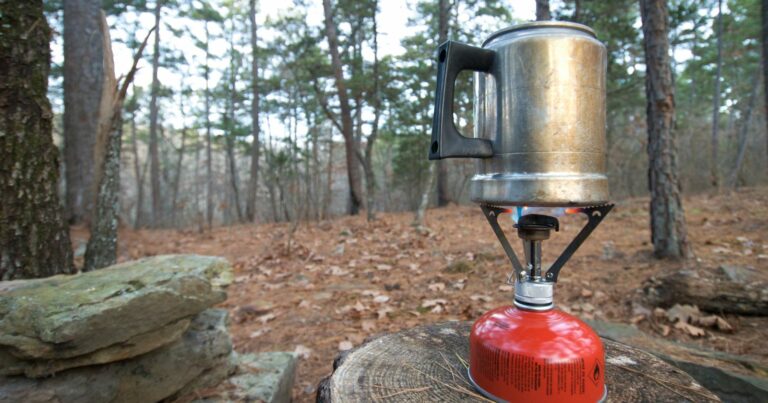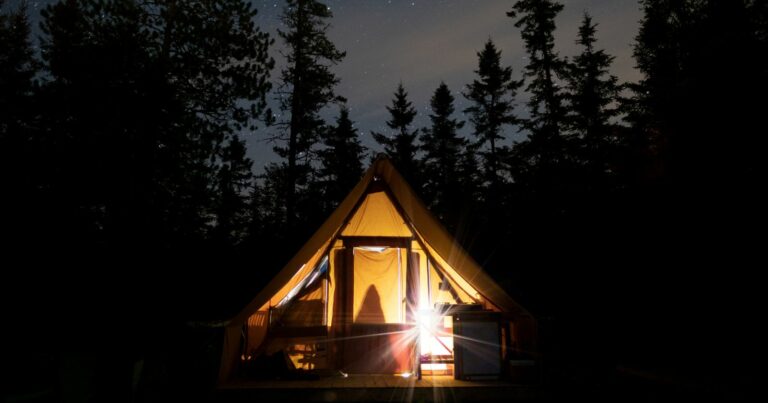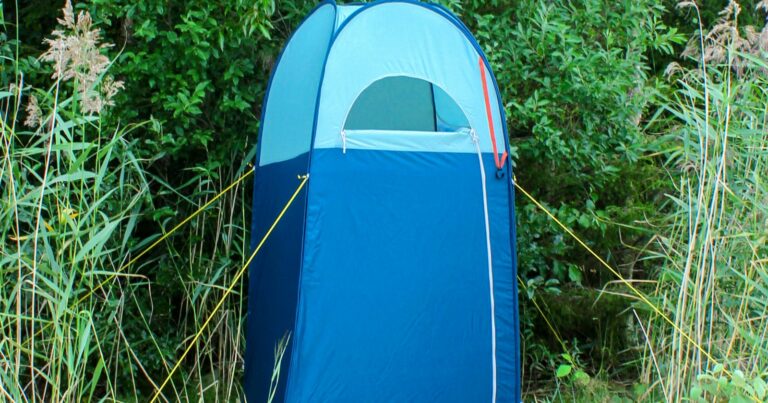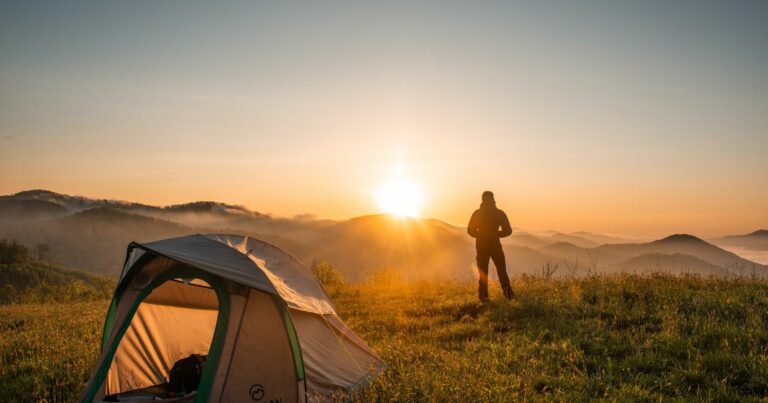How To Shower While Camping
Nothing beats the thrill of camping outdoors and connecting with nature. But after a few days of hiking, fishing, and sleeping in a tent, you start to miss some of those everyday home comforts.
One of the biggest camping challenges? Finding ways to wash up without a real shower. While totally roughing it has its charms, being able to rinse off can make you feel refreshed and more comfortable out in the wilderness. With some clever techniques and gear, you can rig up a way to shower while camping. Whether you use a portable shower tent, a simple rinse kit, or just some biodegradable soap and a swim in the lake, you can stay clean on your camping trip.
This guide will walk through different DIY shower options, from solar camp showers to shower tents and more. With a bit of creativity, you can enjoy getting clean without compromising your authentic camping experience or leaving a trace. Let’s explore how to shower while camping.
Portable Camping Showers
Portable pressurized camp showers are one of the easiest ways to shower while camping. Here’s how they work:
- Fill tank: Fill the shower’s water tank from a spigot, sink, jug, or other freshwater source. Tanks typically hold 1-5 gallons.
- Heat water: Sit the full tank in direct sunlight for 1-2 hours. The sun warms the water. Some showers have attachments to heat water over a stove or campfire.
- Hang and use: Hang the full tank from a tree branch or shower stand. Turn on the showerhead to dispense the pressurized water.
Benefits of portable showers:
- Self-contained and lightweight. Easy to pack and set up.
- Solar heating means no electricity required.
- Pressurized flow mimics a real shower.
- Affordable price point around $20-60.
Follow the manufacturer’s instructions for filling, heating time, safety and use. Rinse off quickly to conserve water. Refill tank as needed.
Rinse Kits
Rinse kits provide a pressurized water flow in a compact package:
- Fill built-in tank with a few gallons of water.
- Pump plunger creates pressure to dispense water through hose and shower head.
- Hang kit from a tree or tripod. Rinse off with the pressurized spray.
Benefits of rinse kits:
- Completely portable and lightweight.
- No solar heating time needed – works with cold water.
- Simple to operate.
Rinse kits hold less water than camp showers. Refill frequently and limit rinse time. Models under $50 are available.
Shower Tents
For more privacy plus storage, use a shower tent with built-in water system:
- Inflatable shower tents have a bladder or tank inside that fills with water.
- The tent has a shower nozzle and drain system. Some include lights and shelves.
- Set up on a flat surface and stake down. One person can shower inside while standing up.
Benefits of shower tents:
- Roomy interior for changing clothes and storing supplies.
- Often have power hookups for hot water, lights, inflator fans.
- Keep insects and mud out of the bathing space.
Shower tent prices range widely, from $100 to over $1000 based on size, features, and water capacity.
Gravity-Fed Bag Showers
You can make a simple shower using a gravity-fed water bag:
- Fill a 5-20 gallon storage bag or solar shower bag with water.
- Attach a hose and shower head.
- Hang the bag from a tree branch or tripod at least 5 feet above the ground.
- The gravity water pressure creates a flowing stream of water.
Benefits of gravity showers:
- Inexpensive to make with existing supplies.
- Completely portable and adjustable.
- Solar heating warms the water.
Monitor water temperature and flow rate. Refill bag as needed. Position over vegetation to minimize soil impact.
Natural Water Sources
If camping near a lake or river, you can take a dip to rinse off:
- Use only biodegradable, environmentally safe soaps and shampoos.
- Scrub up along the shoreline to avoid contaminating the whole area.
- Rinse thoroughly so no traces remain in the water.
- Swim and bathe at least 200 feet away from campsites and trails.
Benefits of swimming to bathe:
- No equipment needed.
- Fun way to cool off and enjoy the water.
- Rinsing hair and body is easy while immersed.
Never use soaps, shampoos, or sunscreen in the water source. Always follow leave no trace guidelines.
Choosing the Best Camp Shower Method
- Assess the campsite – are trees available to hang showers? Is there privacy?
- Know your water supply – is there a spigot on site or do you need a self-contained system?
- Pick a shower type that fits your setup. A lakefront site offers different options than a remote desert camp.
- For car camping, larger solar showers or shower tents work well. Backpackers need ultra compact rinse kits.
- Make sure to have adequate water and drainage so soil doesn’t get saturated.
- Avoid harsh chemicals that can contaminate natural water sources.
Setting Up Your Camp Shower
Once you choose a shower system, follow these tips for setting up:
- Scout a flat location at least 200 feet from water, trails, and other campsites.
- Clear the area of debris like sticks and rocks that could puncture tent floors or pool water.
- Cordon off the shower space with a tarp, poncho, or towel for privacy.
- Hang or fill the shower as directed. Adjust the height as needed.
- Test water temp before getting undressed. Reheat or add water if too cold.
- Place a mat or tarp in tent showers to protect the floor. Direct drain hoses away from the tent.
- Use a camp chair in the shower area for easy dressing and foot hygiene.
Maintaining Your Camp Shower
Proper maintenance keeps your makeshift shower running smoothly:
- Fill tanks, bags, and bladders with fresh, clean water – avoid pond or river water.
- Rejuvenate solar shower bags with a vinegar soak if they smell funky.
- Scrub inflatable shower tents and portable shower tanks with baking soda and water solution periodically.
- Drain and dry shower supplies fully between uses to prevent mold and odors.
- Replace or repair punctured shower bags or failed components like pump handles or shower heads.
- Practice leave no trace principles – don’t dump soapy water directly on the ground.
Frequently Asked Questions
What kind of soap should I use for camping showers?
Use biodegradable, environmentally friendly soaps and shampoos. Avoid products with harsh chemicals that can contaminate natural water sources. Camp suds and Dr. Bronner’s are great options.
How do I get hot water for my camping shower?
Solar heated shower bags work well for heating water. You can also use a portable camp shower with a heat coil attachment for warming over a stove or fire. Take care not to scorch or melt plastic components.
Is it okay to bathe directly in lakes or rivers?
It’s best to minimize contamination by bathing along the shoreline and rinsing thoroughly with biodegradable soap. Never use soaps in the water. Stay at least 200 feet away from camping areas and trails when bathing.
How much water do I need for a camp shower?
Plan for 3-5 gallons of water per shower session. Solar shower bags hold 2-5 gallons. Rinse kits may only have 1-2 gallons per fill. Have extra water on hand for refilling.
How can I make my own pressurized camping shower?
You can convert a garden sprayer or outdoor chemical spray tank into a pressurized shower. Replace the original nozzle with a shower head attachment. Fill tank, pump air pressure, and shower.
Staying clean on your camping adventure is totally possible with these DIY shower methods. A little trial-and-error will help you find the portable shower setup that fits your style of camping and need for comfort out in the wilderness. The relaxing feeling of washing trail dirt and sweat away makes the effort worthwhile.







